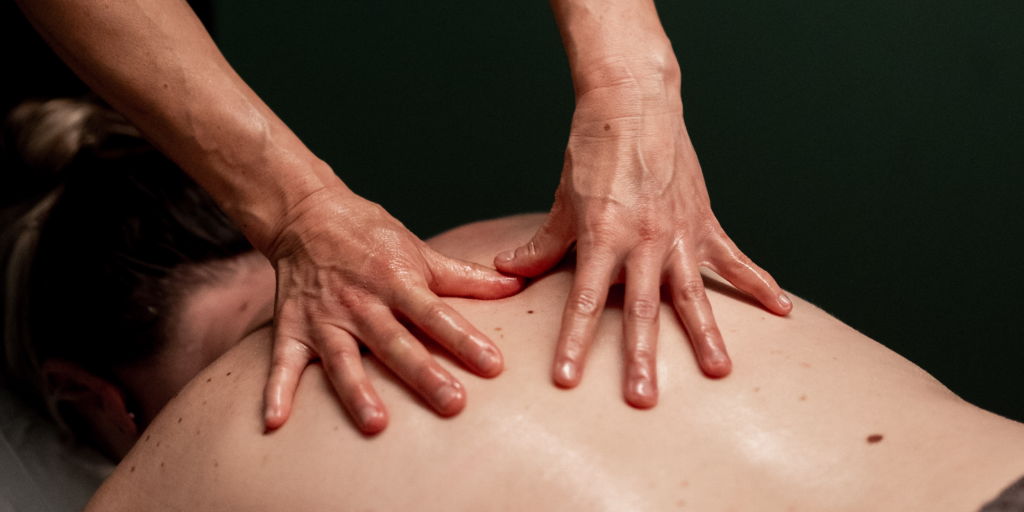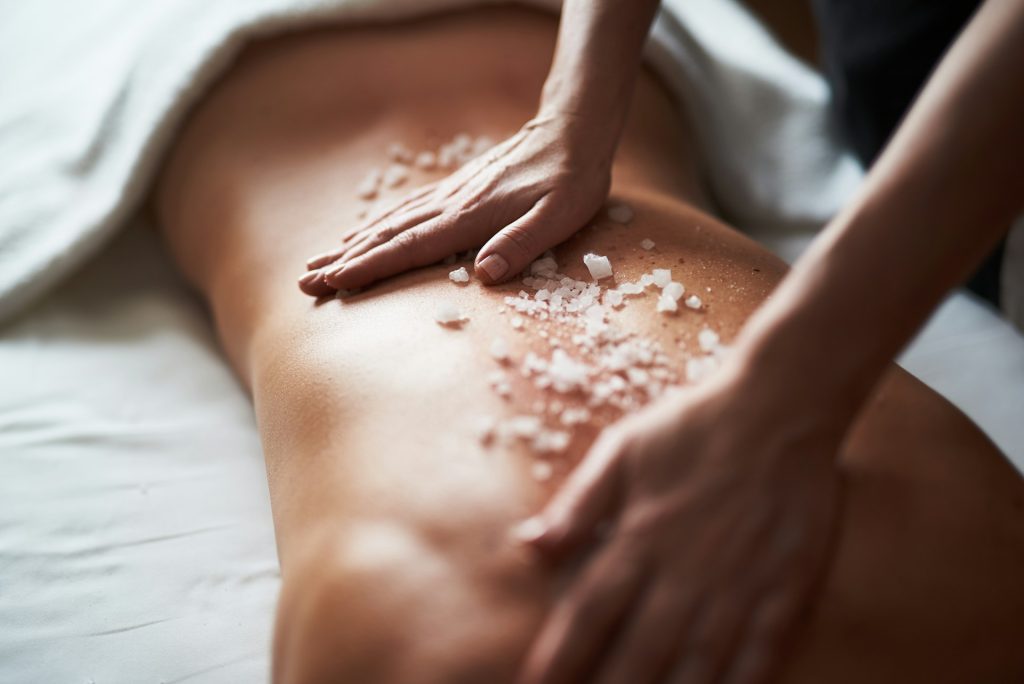When you’ve overstretched or torn your muscle fibers, the injured muscle tissue needs care to heal properly. Lying on a massage table might be more than just relaxing; it’s a step towards recovery. Massage reduces pain and inflammation, offering a comforting touch that can accelerate healing.
The benefits of massage therapy extend beyond mere relaxation. For someone dealing with a pulled muscle, therapeutic touch can be a powerful ally, enhancing the body’s natural healing mechanisms and alleviating discomfort associated with the injury.
Understanding Muscle Injuries
Muscle injuries can range from mild discomfort to severe, immobilizing conditions. Understanding the nature and severity of these injuries is crucial to selecting the appropriate treatment and facilitating the body’s recovery.
Acute Pain and Pulled Muscles
Acute pain from a pulled muscle can be sharp and sudden, limiting range of motion and impacting daily activities. At this initial stage of injury, therapy for athletes and non-athletes alike focuses on minimizing pain and preventing further damage.
Chronic Pain: The Persistent Ache
Chronic pain, such as shoulder pain or tennis elbow, can linger long after the initial injury. Regular massage sessions can help reduce swelling and relieve pain, becoming a vital component of long-term management and recovery strategies.
Identifying the Signs of Muscle Strains
Recognizing early signs of muscle strains is key to preventing further injury. Symptoms often include a snapping sensation during the injury, followed by pain, weakness, and sometimes bruising or swelling.

The Role of Massage in Muscle Recovery
Massage plays a significant role in muscle recovery, leveraging the physical benefits of touch to promote muscle healing and ease discomfort.
Immediate Aftermath: To Massage or Not to Massage
In the immediate aftermath of a muscle strain, assessing whether massage is advisable to address muscle tightness and help remove excess fluid from the soft tissues is important.
The First 72 Hours: A Critical Window
The first 72 hours after a muscle injury are critical. During this time, the focus is on controlling swelling and preventing additional harm to the injured muscle tissue.
Benefits of Massage for Muscle Healing
One of the key benefits of massage therapy is its ability to soothe pain and inflammation, especially after intense or strenuous exercise, making receiving a massage a sought-after treatment.
Enhanced Blood Flow to the Affected Area
Massage can break down scar tissue and promote improved blood circulation, improving muscle health and faster recovery.
Endorphin Release and Pain Relief
The gentle pressure applied during a massage stimulates endorphin release, offering natural pain relief and a sense of well-being.
Types of Massage for Pulled Muscles
Different types of massage can be beneficial at various stages of recovery from a pulled muscle, each tailored to the specific needs of the healing tissue.
Gentle Massage Techniques for Early Recovery
During early recovery, gentle massage techniques can help to soothe the injured area, promoting circulation and relaxation without causing further strain on the sensitive tissues.
Deep Tissue Massage: Timing Is Key
Deep tissue massage is a powerful tool for healing but must be timed appropriately to ensure it doesn’t exacerbate the injury. When applied at the right moment, it can significantly promote muscle recovery.
Practical Advice for Pulled Muscle Care
For those dealing with a pulled muscle, practical self-care advice can make a difference in the speed and quality of recovery, aiding in returning to pain-free daily activities.
Home Remedies to Complement Massage
Alongside professional treatments, home remedies are vital in managing a pulled muscle. These easily accessible solutions support the body’s natural healing process and can reduce discomfort while aiding recovery.
R.I.C.E. Method: Rest, Ice, Compression, Elevation
The R.I.C.E method is highly recommended to treat a muscle strain at home. Rest allows your body to initiate the healing process without additional strain. Using an ice pack can reduce swelling and numb the pain. Wrapping the affected area with an elastic bandage provides compression to minimize inflammation, and elevation of the limb above the heart level helps reduce swelling by draining excess fluid.
Incorporating Physical Therapy Into Your Recovery Plan
Physical therapy can help by introducing a series of strengthening exercises that target the surrounding muscles, thereby providing better support to the injured area. Stretching exercises are also incorporated to maintain flexibility, reducing re-injury risk and promoting a more balanced muscle recovery.
When to Seek Professional Massage Therapy
If you’re experiencing persistent pain or discomfort that doesn’t improve with basic home care, it may be time to consider professional massage therapy. A licensed therapist can offer specialized techniques that cater to your condition and promote healing.
Signs You Might Need a Massage Therapist
It might be time to see a massage therapist if you notice limited mobility, continuous pain or if the discomfort in your muscles doesn’t improve with rest and home remedies.

Tools and Techniques for Self-Massage
Self-massage can be a convenient way to manage muscle soreness and enhance recovery. It enables you to address the pain immediately, using tools like foam rollers or massage balls to work on tight areas.
Utilizing a Massage Gun for Deep Tissue Stimulation
A massage gun can be consulted by your doctor or physical therapist for deep tissue stimulation, helping to alleviate pain in injured muscles. This tool enhances muscle recovery by improving blood flow to damaged muscle fibers and may facilitate strength recovery after injury, particularly if you’re dealing with chronic pain. However, deep tissue massages should be used carefully and ideally under professional guidance.
Simple Hand Techniques to Alleviate Discomfort
Simple hand techniques, like gentle kneading and stroking around the affected area, can provide relief and are easy to perform. Ensuring you’re gentle with your movements can prevent further damage to the muscle.
The Dos and Don’ts of Self-Massaging
When self-massaging, listen to your body and focus on areas of tension. Don’t apply too much pressure, as this can aggravate injured tissues. Always start gently and progressively increase intensity as tolerated.
Preventions Better Than Cure: Avoiding Muscle Strains
Preventing muscle strains starts with routine practices, including proper warm-up exercises before physical activity, maintaining good conditioning, and ensuring your body has adequate rest between intense activities.
Exercise Best Practices to Minimize Injury Risk
Incorporating a balanced exercise regimen that strengthens muscles and connective tissue can minimize your risk of injury. This includes strengthening and stretching exercises to maintain muscle health and flexibility.
The Importance of Proper Posture and Ergonomics
Maintaining proper posture and ergonomics, especially during repetitive activities or while sitting for long periods, is essential to prevent muscle strain and support overall musculoskeletal health.
Building Strength and Flexibility to Ward Off Strains
Building strength and increasing flexibility through regular exercise can help protect your muscles from strains. Strong, flexible muscles are less prone to injury and can endure more physical stress.
Navigating Recovery and Beyond
Recovery from a pulled muscle varies based on the severity of the injury. A balanced approach to rest and activity, consistent self-care, and adherence to professional advice will contribute to a successful recovery.
Setting Realistic Expectations for Healing Time
Understanding that healing takes time is crucial. Setting realistic expectations for recovery ensures that you provide your body with the necessary time and care to heal properly without rushing the process.
Balancing Rest and Activity During Recovery
When you’re on the mend from a pulled muscle, you must strike a balance between resting and gently re-engaging the surrounding muscles. Too much rest can lead to stiffness, while too much activity may aggravate your injury. Listen to your body and incrementally increase activity, allowing therapy to help guide your recovery pace. Gentle movements and stretches can keep the muscles pliable without overstraining them.
Transitioning Back to Normal Physical Activity
As your muscle heals, transitioning back to your usual level of physical activity requires patience and attentiveness. Begin with low-impact exercises that do not place undue stress on the recovering muscle. Gradually reintroduce more strenuous activities, ensuring the surrounding muscles are strong enough to support the previously injured area. This gradual approach helps prevent re-injury and builds confidence in your body’s capabilities.
Final Thoughts
Massage therapy can be a highly effective tool for the recovery process of strained muscles. By working to reduce pain and tension, massage therapists can speed up the healing process. Techniques that aid in reducing inflammation and decreasing pain contribute to a more comfortable and efficient recovery, allowing you to return to daily activities with less discomfort. Remember, the goal is to speed up recovery, not rush it.
Massage not only aids in relieving pain and swelling from muscle injuries but also supports overall well-being. It can improve muscle function, foster tissue healing, and bolster the immune system. The release of endorphins during massage contributes to mental health, and the stimulation may even enhance the activity of immune cells. Embrace massage as a multifaceted ally in your journey to recovery.
